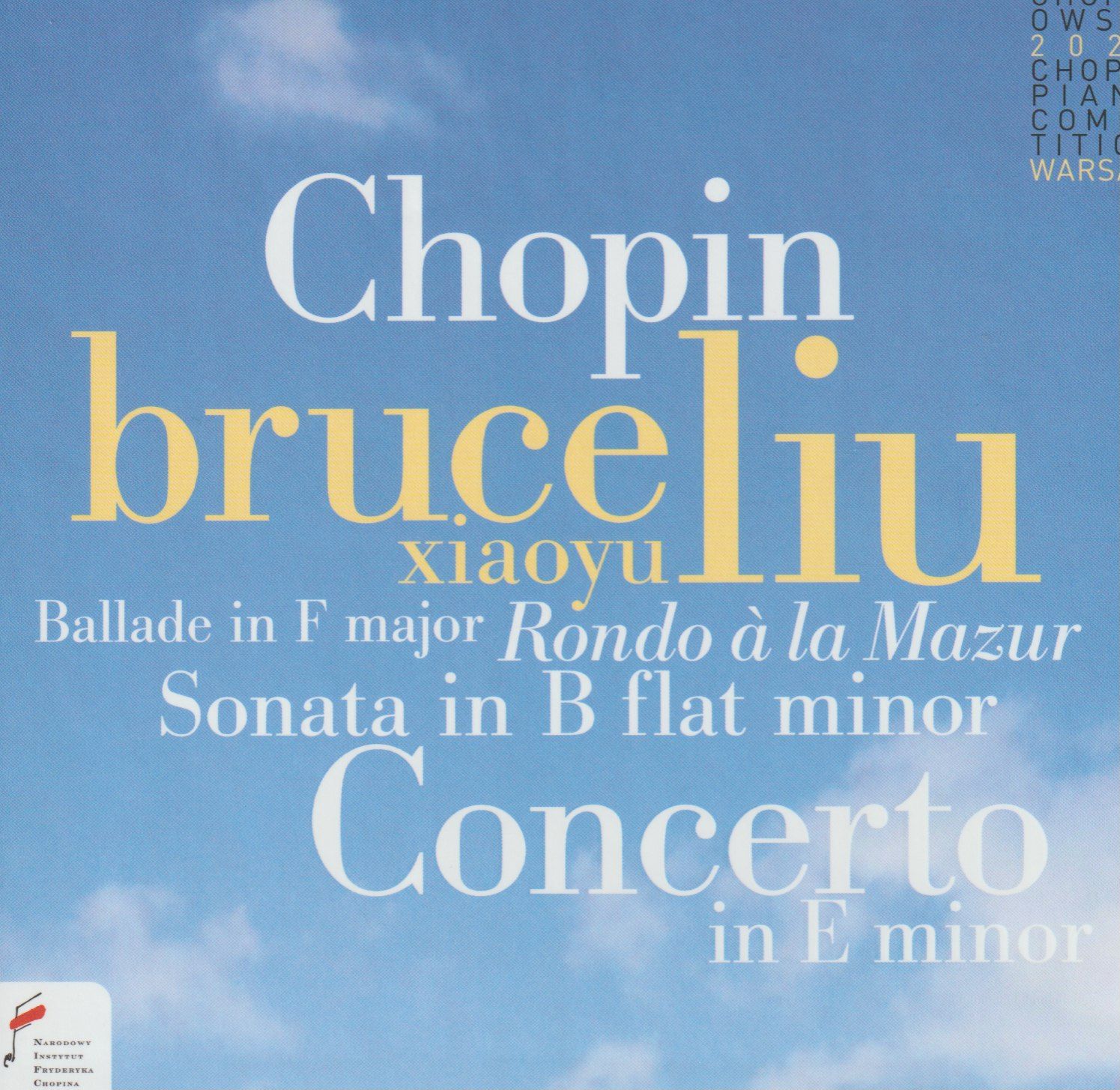Filling out Bruce Liu's Chopin journey

Previously, we at Classical Explorer reported on Bruce Liu's debut Deutsche Grammofon disc; here's a complementary disc from the Chopin Institute in Poland - If you refer to that post, you can hear the Chopin E minor Concerto that closes this disc and was given as a bonus to that post. The new disc gives Liu'sfull name, including the Chinese bit - Bruce Xiaoyu Liu.
A brief reminder of Bruce Liu's background: born on 8 May 1997 in Paris, he graduated from the Montreal Conservatoire under Richard Raymond and is currently a student of Dang Thai Son. He has performed with major ensembles including the Cleveland Orchestra, Israel Philharmonic Orchestra, Montreal Symphony Orchestra and Orchestra of the Americas, and has toured with the China NCPA Orchestra in North America. Recent seasons have brought two successive tours of China with the National Symphony Orchestra of Ukraine and the Lviv National Philharmonic Orchestra (including appearances at the National Centre for the Performing Arts, Beijing Concert Hall and Shanghai Oriental Arts Centre), and a concert with the Orchestre Lamoureux at Paris’s Salle Gaveau. He has won prizes at international piano competitions in Sendai, Montreal, Tel Aviv and Viseu.
So, with the new disc, we begin with the Chopin Ballade in F, Op. 38 - a performance that in itself proves Liu. a worthy winne, pliant in the lyrical sectios incendiary in teh faster ones. This is form the Second Round:
When I was researching my interview for International Piano with Liu, it was the performance of the liesser-known Rondo à la Mazur that stood out - imagine my delight to see it here, restored in fabulous sound. This is Chopin's Op. 5 and shows the care and respect Liu accords pieces not generally considered highest-tier Chopin. But juts listen - it's a jewel of a piece, and this is a jewel of a performance. Again, this was from teh competition's second stage:
This disc holds two major works and so doesn't feel in the least bit "bitty". The second is the Concerto performance, the first the Second Sonata, recorded on October 16, 2021 during the Competition's Third Stage. Rightly, Liu repeats the exposition to the Grave, and although the effect is less startling than on Alexander Kobrin's recrent recording (all three Sonatas, on Quartz, so including the fabulous and under-rated First Sonata, linked below), it still makes us sit up and listen! The lyricism of this performance, coupled with an inner tensile strength, is the perfect Chopin combination:
Here's the complete performance:
These are official recordings so are preserved in fine sound - one can really hear Liu's beautiful tone in the slow movement of the sonata, leaving one to relish his exquisite rubato (no sense of the overly-studied about this!) both there and in the Trio of the Scherzo (the Scherzo itself is of mercurial bent - sparks fly!). The famous Funeral March boasts a phenomenal onward tread, born of a rock-solid rhythmic basis, the contrasting theme of utmost tenderness. And certainlythe prestigitation required of competition winners is there in the whirlwind finale (the wind among the gravestones, as Alfred Cortot put it).
Here's that superb Chopin First Concerto - great to hear it in fabulous sound on the disc. Liu is, it has to be said, in anotehr tier to his orchestra and conductor (Warsaw Philharmonic under Andrzej Boreyko), although one has to acknowledge their fine shaping of the second subject in the first movement orchestral exposition:
There is no doubting the audience's enthusiasm -they break in the second Liu stops playing, and therefore applaud over the closing orchestral bars. Quite the event.
There is no doubting this is an important document - and if you enjoyed this DG disc, this is essentially a mandatory purchase. Perhaps Liu takes a few moments to fully settle in the first movement of the Concerto, but that feels more like part of the compettion process than a criticism; and one would ideally want a top-tier orchestra for a studio recording. The slow movement is a dream, that combination of loveliness of sound, the ability to keep momentum in perfect flow and flux plus a true, magical, full-toned pianissimo is dynamite. The finale is the finest of the three, chock-full of felicitous touches from Liu couched in the most remarkable fluency. Those who know Pollini's winning performance in "his" year at teh competition might find some parallels here.
The booklet, which includes fine notes on the music itself, also acts as a photographic document of Liu's time in Warsaw - lavishly illustrated (and hardback) this is one of the finest single-disc booklets there is out there.
